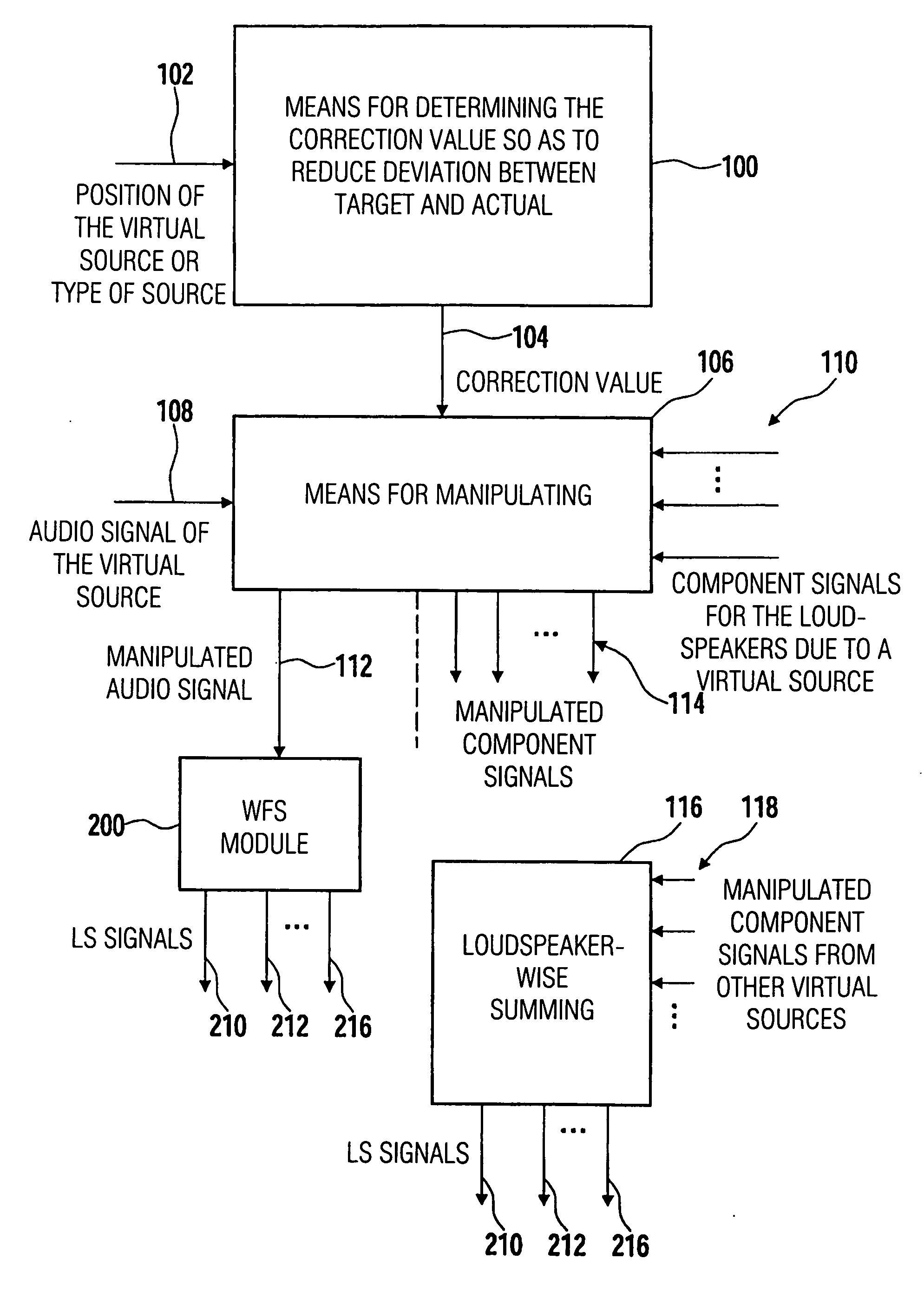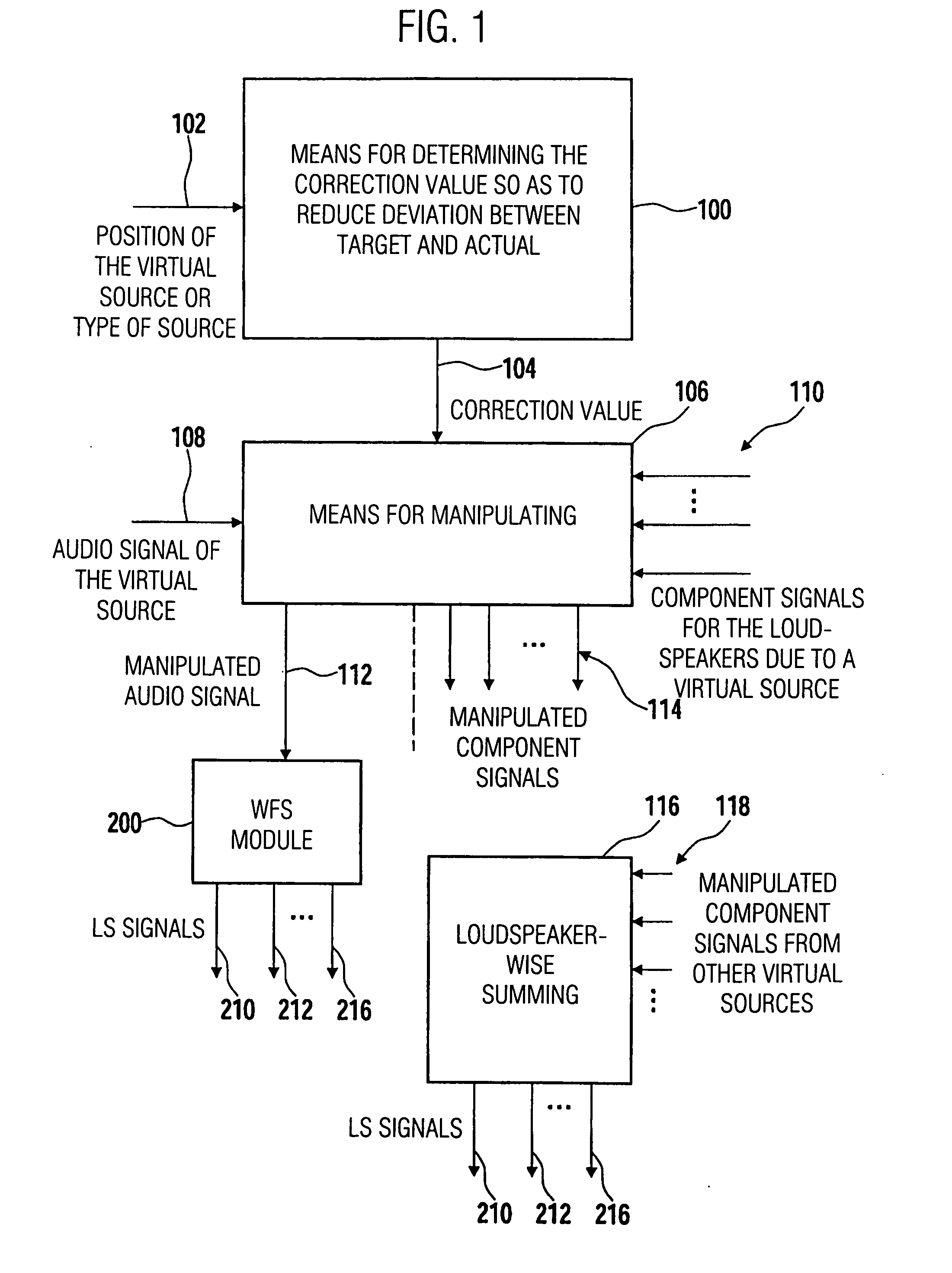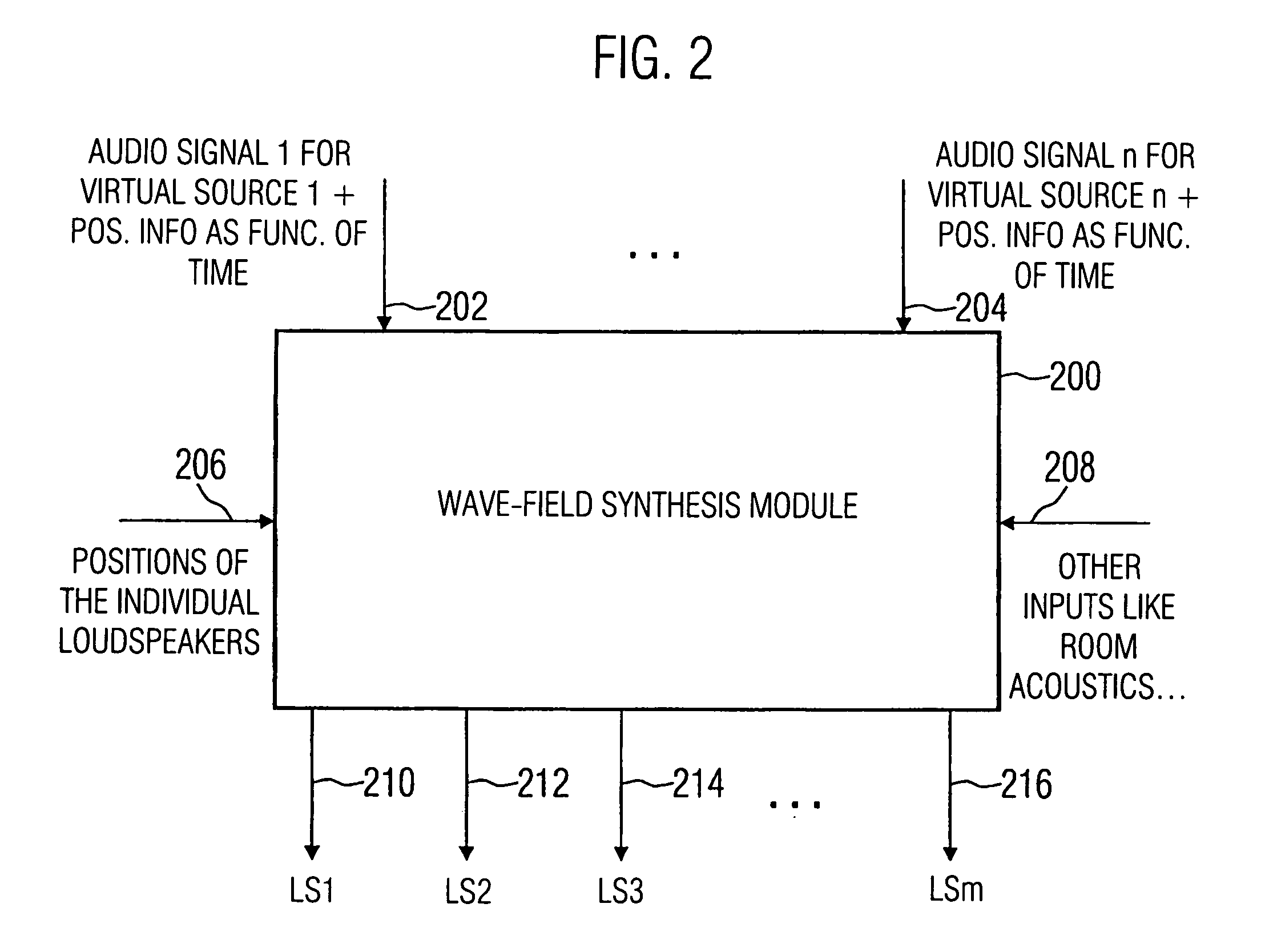Apparatus and method for generating a low-frequency channel
a low-frequency channel and apparatus technology, applied in the direction of electrical transducers, loudspeakers, loudspeaker signal distribution, etc., can solve the problems of affecting the quality of audio reproduction, affecting and affecting the quality of spatial sound reproduction of natural, but also virtual environments. , to achieve the effect of reducing the level of artefacts
- Summary
- Abstract
- Description
- Claims
- Application Information
AI Technical Summary
Benefits of technology
Problems solved by technology
Method used
Image
Examples
Embodiment Construction
[0082] As has already been explained, both loudness and delay are calculated for each loudspeaker channel and each virtual source by the wave-field synthesis algorithm. For this purpose, the position of the individual loudspeaker must be known. To this end it is preferred, in accordance with the invention, to scale the overall loudness of all loudspeakers at a reference point of the wave-field synthesis playback system onto an absolute reference loudness, i.e. a target amplitude state. This scaling of the individual audio object signals for the individual wave-field synthesis system loudspeakers, i.e. the individual loudspeakers of the array, is based on the findings that the inadequacies of a wave-field synthesis system may at least be alleviated with a finite number (which may be implemented in practice) of loudspeakers, when a level correction is performed, to the effect that either the audio signal associated with a virtual source is manipulated before the wave-field synthesis u...
PUM
 Login to View More
Login to View More Abstract
Description
Claims
Application Information
 Login to View More
Login to View More - R&D
- Intellectual Property
- Life Sciences
- Materials
- Tech Scout
- Unparalleled Data Quality
- Higher Quality Content
- 60% Fewer Hallucinations
Browse by: Latest US Patents, China's latest patents, Technical Efficacy Thesaurus, Application Domain, Technology Topic, Popular Technical Reports.
© 2025 PatSnap. All rights reserved.Legal|Privacy policy|Modern Slavery Act Transparency Statement|Sitemap|About US| Contact US: help@patsnap.com



